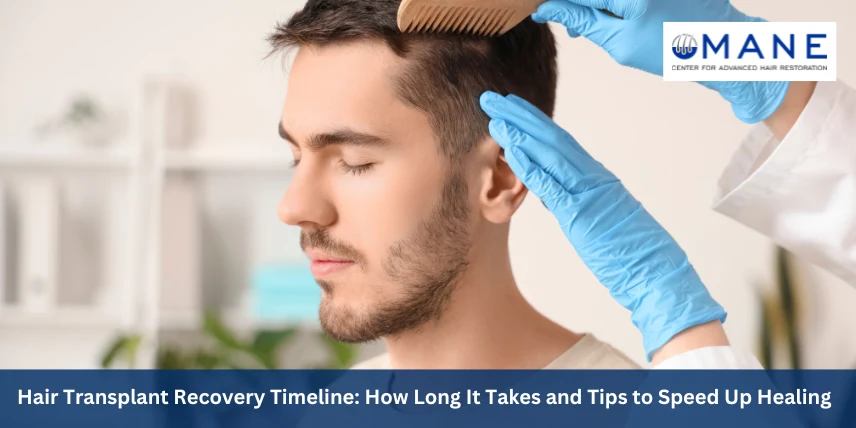


A hair transplant is a popular and effective solution for hair loss, helping individuals regain their confidence with a fuller head of hair. In 2021, approximately 3.4 million hair transplant procedures were performed globally, reflecting a significant increase from 2.6 million in 2019. While the procedure is important, recovery is crucial in achieving optimal results. Many people wonder how long hair transplant recovery takes and what they can do to heal faster.
Follow these recovery tips and get one step closer to confidently flaunting your new hair.
After a hair transplant, your body begins a natural healing process that determines the success of the procedure. Several factors influence how long hair transplant recovery takes, including:
Understanding what to expect can ensure a smooth and stress-free recovery.
Immediately after surgery, you may experience:
During this phase, it is crucial to follow your surgeon’s aftercare instructions. Avoid touching or scratching your scalp, wash your hair gently as advised, and sleep with your head elevated to reduce swelling.
You might notice shock loss around the second to the third week when the transplanted hair starts shedding. This is a natural part of the recovery process and should not cause concern. The hair follicles remain intact under the skin and will soon enter the growth phase.
During this stage, you may not see significant visible changes. The hair follicles remain dormant phase, preparing for new hair growth. Some people may experience mild itching or slight redness as the healing continues.
By the fourth month, new hair starts to emerge. Initially, the hair may appear thin and fine but gradually becomes thicker. Patients usually notice a significant improvement in hair density and texture as the months progress.
The transplanted hair will fully mature between seven months to a year, blending seamlessly with your natural hair. Some individuals may see continued improvements for up to 18 months. At this stage, hair density increases, and the texture becomes more natural-looking.
While the recovery process takes time, there are ways to speed up hair transplant recovery and ensure the best results:
Adhering to your surgeon’s post-hair transplant care guidelines, including proper hair-washing techniques and medication use, is essential for a smooth recovery.
Eat nutrient-rich foods containing vitamins A, C, D, and E, protein, and biotin to support hair growth and overall healing.
Both smoking and alcohol can slow down the healing process by restricting blood flow to the scalp, which may delay hair growth.
Drinking plenty of water helps maintain a healthy scalp and improves tissue repair.
For the first few weeks, avoid strenuous exercise, heavy lifting, and excessive sweating, as these activities can increase swelling and the infection risk.
Direct sunlight can harm sensitive scalp tissue. When outdoors, wear a hat or apply sunscreen (as recommended by your doctor).
Hair growth takes time. Stress can negatively impact healing and hair regrowth, so stay relaxed and trust the process.
While mild discomfort and shedding are normal, reach out to your surgeon if you experience:
Achieving the best results from your hair transplant requires patience, care, and commitment. Stick to the recovery tips, stay consistent with your post-op routine, and let your body heal at its own pace. With time, you’ll notice a fuller, natural-looking hairline that brings back your confidence. The journey to healthier hair is truly worth the wait!
Tired of struggling with hair loss? At Mane Center for Advanced Hair Restoration, we offer advanced treatments tailored to your needs. Our expert team is here to guide you through every step of your transformation.
Take control of your hair journey today by scheduling your consultation with us!